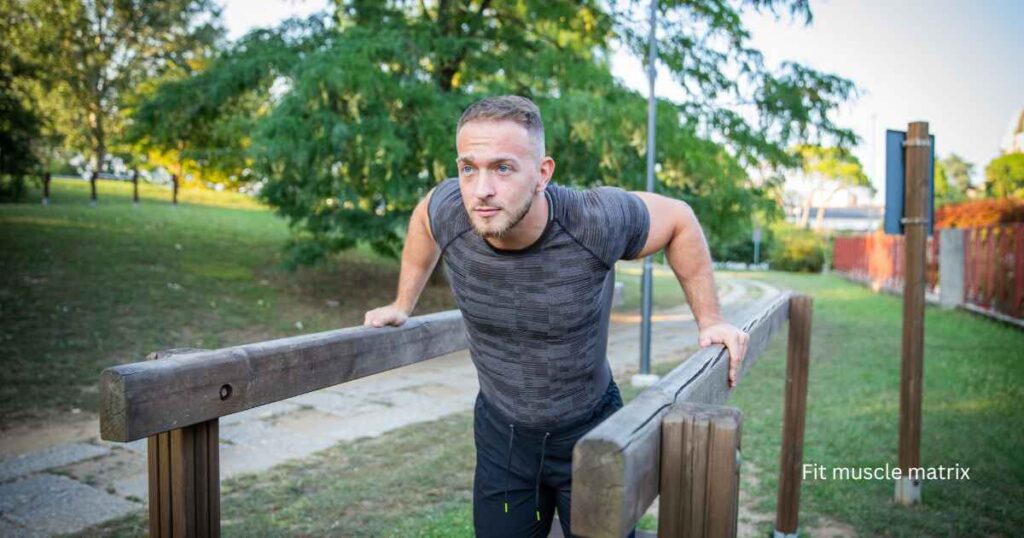Do plyometrics actually make you faster?: Cadbury says that performing plyometrics increases your number of fast-twitch muscle fibers, which improves your sprinting ability. This can help you run faster over shorter distances, and it will also make it easier to climb hills.
Even if you are a fast runner, these improvements may still be possible. In one study, for example, runners who were able to complete a 5K run in about 15 minutes were studied.
Four groups of runners were formed. They either did polarized training or pyramidal training for eight weeks. After an eight-week test, those who performed pyramidal training plus plyometrics (which is similar in nature to polarized but with a slightly higher tempo) improved their 5K times by 1.6% (which is equivalent to 24 seconds on a 25-minute race).
In contrast, those who combined polarized training with plyometrics saw their 5K times improve by 1.8%. This is equivalent to 27 seconds in a 25-minute race. Those who didn’t add plyometrics into their training only showed marginal improvements on the 5K distance. [Do plyometrics actually make you faster?]
7 powerful plyometrics exercises actually make you faster
- Kangaroo Hops
- Lateral Depth Jumps
- Ankle Bounce Jumps
- Scissor Jumps
- Plyo Burpee with Jump Tuck
- Drop Squat with Lateral Shuffle
- Rotational Box Jumps
1. Kangaroo Hops
The Hop-A-Roo Kangaroo is our first toy in the Play Panel. This is a fun, interactive toy that’s perfect for children aged 12 months or older. Harriet enjoys playing Hop-Roo with its 2 songs and 10 melodies.
She loves to put Baby Joey in the Kangaroo’s pouch and take it out. Hop-a-Roo, a vibrant and soft toy that children love, is the perfect gift for any child.
Hop-a-Roo Kangaroos hopping can be hit-or-miss. It will sometimes hop along the flooring a bit, and other times, it bounces on the spot.
Could this be because of our wood flooring? It was supposed to move more to encourage babies to crawl/toddle.
It mostly remains in the same place. When it hops, it tends to lean back on the tail instead of moving forward. Harriet doesn’t seem to mind, as she thinks the Kangaroo hopping is great! [Do plyometrics actually make you faster?]

2. Lateral Depth Jumps
The depth jump is the exercise that comes closest to a magic drug for explosive power and vertical jump. I don’t like to promote single exercises because too many athletes are looking for a “magic drug” that can transform their athleticism.
As a young sportsperson, I experimented with every training technique I could find to improve my jumping and speed.
I also invented many new ones. I did plyometric high-repetition programs, wall sits, running stairs, basic strength training and more. I made a few gains, but nothing major. The search continued.
In the back of my basketball magazine, I discovered a plyometrics program that claimed to be “science-oriented.”
The program I ordered changed the course of my career in sports and maybe even my life. The program did not focus on the high-frequency plyometrics that were popular at the time but on the low-frequency and high-intensity depth jump. [Do plyometrics actually make you faster?]
Read Also: Is bouncing the ball good for the back?
3. Ankle Bounce Jumps
It allows athletes to build more glutes. You can find athletes who have their feet out, and they don’t jump or run well.
The rigid athlete will have contact and takeoff and nothing moves in the leg. A less rigid athlete could have a collapsed foot or twisting ankle. A more rigid athlete will be explosive, as there is no leak in the chain.
They have developed a compensation pattern for moving down the track. Two sprinters I had were successful and had this scenario.
Both sprinters were very strong and turned out. Both were very powerful. One jumped 40 feet, and the other jumped 37.
The 37″ lifted more weight than the 40″. The 37″ was also faster than the 40″. The 37″ never completed his career due to a hamstring injury. [Do plyometrics actually make you faster?]

4. Scissor Jumps
Scissor Jumps are an excellent lower-body exercise. The scissor-jump can help build muscle in the upper and lower leg, including your hamstrings and glutes. It also helps to tone your quadriceps and calves.
Scissor Jumps Can Improve Your Cardiovascular Health. You can improve your cardio endurance by practicing scissor jumpers as part of your high-intensity interval training program (HIIT).
The scissor jump is a versatile exercise that uses body weight. The scissor exercise is adjustable, just like many other plyometrics. Perform a burpee or ankle weights between repetitions to add an extra challenge.
Start by doing 2-4 sets with 5-10 repetitions for each leg. It would help if you chose your repetitions and sets based on how well you can maintain your technique during each set. [Do plyometrics actually make you faster?]
Read Also: Can you do skipping without a rope?
5. Plyo Burpee with Jump Tuck
The fitness industry has embraced plyometrics for its ability to improve athletic performance and overall strength and agility.
Tuck jumps are one of the most challenging and effective plyometric movements. This section will provide a comprehensive overview of the benefits, techniques and precautions associated with plyometric exercise.
Plyometric training, or jump training, is a high-intensity form of training that includes rapid and explosive movements.
Plyometrics are designed to increase the power output by increasing force production. This results in better performance during activities like sprinting, throwing, and jumping.
Plyometrics improves athletic performance by improving speed, agility and coordination. These exercises help athletes to develop the explosiveness and quick reactions required for their sports. [Do plyometrics actually make you faster?]

6. Drop Squat with Lateral Shuffle
Dayne Gingrich Day 06’s visualization and footwork were amazing! The activities that I could do on the court and then visualize who I would be playing against were awesome!
The pickle ballers who showed up on the court gave me crazy looks as I swung at nothing. But my favorite part was imagining myself playing against them and using the split step and lateral movement. Then I tried it again tonight and got a single point from a one-two attack. I will use that skill often.
Always consider how it fits into your daily schedule. It may take several repetitions of your routine before you find what you can do consistently.
Reply to this post with your proof that you have completed the challenge. This video challenge will improve your life and help you work together to achieve a bigger goal. [Do plyometrics actually make you faster?]
7. Rotational Box Jumps
Box jumps can be a great challenge for experienced exercisers. Take a break before adding box jumps to your routine if you are a beginner or if you have an injury.
Consult a doctor or a personal trainer with experience in technique and form before diving in. Jumping Exercises will help you increase your strength, speed, and power.
Box jumps are the quintessential Plyometric exercise where you jump up from the ground onto an elevated surface like a box.
Consider the professional footballers and sprinters. They rely on their legs for quick, explosive movements. Box jumps can help you achieve your goal. [Do plyometrics actually make you faster?]

Conclusion:
Yes, plyometrics can make you faster by improving explosive power, muscle efficiency, and coordination. These high-intensity movements target fast-twitch muscle fibers and enhance the stretch-shortening cycle, which is essential for acceleration and speed in running and other sports. When incorporated consistently into a training routine, plyometrics are an effective way to boost overall athletic performance and speed. [Do plyometrics actually make you faster?]
Do plyometrics actually make you faster? FAQ
1. What is plyometric exercise?
Ans: Exercises that are high-intensity and explosive in nature, such as plyometrics, target muscle fibers with rapid twitch, which improves muscle strength, speed, agility, and power. Jump squats and box jumps are common examples.
2. Does plyometrics work for sprinters as well as endurance runners?
Ans: Yes! Sprinters benefit from plyometrics by increasing their top speed and acceleration. The efficiency and agility of endurance runners will also help them maintain their form and speed for longer distances.
3. Is plyometrics suitable for beginners?
Ans: Beginners should start by using lower-impact movements like small hops or skipping. To prevent injury, it is important to use the correct form. If you are unsure of your technique or intensity, it’s a good idea to consult a trainer.
